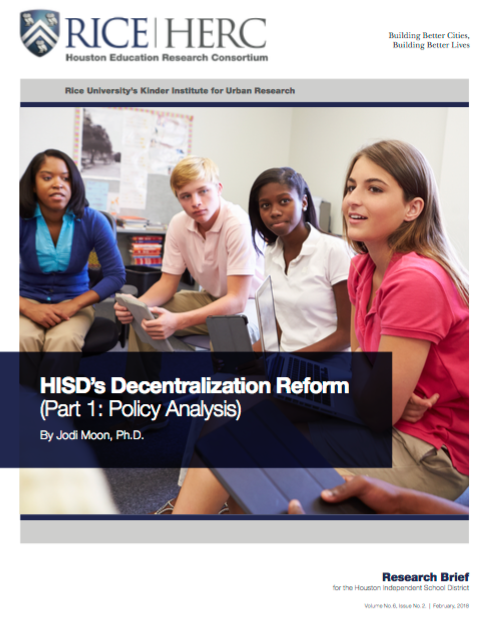In this first brief, we examine the implementation of decentralization at HISD. The process that HISD originally undertook was well documented and fairly well structured. Over time, many of the key components of a strong decentralization model were addressed. For example, decision-making was shifted to the campus level. Funding was re-structured to provide the principals more flexibility and to re-distribute monies to schools based on a base amount plus weights for student level characteristics. Key changes were phased in, and attention was given to minimizing negative impacts as campuses adjusted to funding redistribution.
However, some components of decentralization have been only partially fulfilled. For instance, in the literature, school choice is important under this model because it fosters competition and innovation as campuses strive to protect their funding by doing the best job they can for students. HISD is an open choice school district in theory; yet in practice, most campuses are using transfer agreements and choice is somewhat constricted. Additionally, research emphasizes the need to review and update the weighting structure frequently; while the weights have been adjusted, there is an opportunity to revisit these based on Houston’s specific demographics.
Finally, there are key elements of decentralization that were not implemented. The shift from average to actual teacher salaries was never made, and Small School Subsidies and magnet programs serve to distort the impact of funding redistribution. These findings suggest that there are modifications that could improve the existing model.






